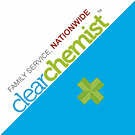Understanding Veterinary Prescriptions: A Guide for Pet Owners
As a pet owner, ensuring the health and well-being of your furry companion is a top priority. One critical aspect of pet care involves understanding veterinary prescriptions. Just like humans, pets may require medications to treat various conditions, from chronic illnesses to short-term infections. However, navigating the world of veterinary prescriptions can sometimes be confusing. This blog aims to demystify veterinary prescriptions, helping you understand their importance, how they work, and what you need to know when managing your pet’s medications.
What is a Veterinary Prescription?
A veterinary prescription is a written order from a licensed veterinarian that authorizes the dispensing of specific medications for your pet. These prescriptions are necessary for many medications, especially those that are potent, have the potential for misuse, or require precise dosing and monitoring. Veterinary prescriptions ensure that pets receive the correct medication for their specific health needs, based on a professional diagnosis.
Why are Veterinary Prescriptions Important?
- Accuracy and Safety: Veterinarians are trained to diagnose health issues in animals and prescribe the appropriate medication and dosage. This ensures that the treatment is both effective and safe for your pet.
- Monitoring and Follow-Up: Prescriptions often come with instructions for follow-up visits to monitor your pet’s response to the medication. This helps in adjusting dosages if necessary and catching any side effects early.
- Legal Compliance: Certain medications are regulated by law and require a prescription to ensure they are used appropriately and responsibly.
Components of a Veterinary Prescription
A veterinary prescription typically includes the following details:
- Pet’s Information: Name, species, breed, age, and weight of your pet.
- Diagnosis: The medical condition being treated.
- Medication Details: Name of the medication, dosage, form (e.g., tablet, liquid), and quantity.
- Instructions: Detailed directions on how to administer the medication, including frequency and duration.
- Veterinarian’s Information: Name, contact information, and signature of the prescribing veterinarian.
How to Obtain and Fill a Veterinary Prescription
- Consult Your Veterinarian: If your pet is showing signs of illness, schedule an appointment with your vet. They will diagnose the condition and determine if medication is necessary.
- Receive the Prescription: If medication is required, your vet will provide a written prescription. Some vets may send the prescription directly to a pharmacy or dispense the medication from their clinic.
- Fill the Prescription: You can fill the prescription at a veterinary pharmacy, a regular pharmacy (if they carry the medication), or an online pet pharmacy. Ensure the pharmacy is reputable and follows legal guidelines for dispensing veterinary medications.
Tips for Managing Your Pet’s Medications
- Follow Instructions: Administer the medication exactly as prescribed. Do not change the dosage or stop the medication without consulting your vet.
- Monitor for Side Effects: Watch for any adverse reactions or side effects and report them to your veterinarian immediately.
- Store Properly: Store medications as directed, usually in a cool, dry place. Some medications may require refrigeration.
- Keep Records: Maintain a record of your pet’s medications, including the dosage, administration times, and any observed effects.
Common Questions About Veterinary Prescriptions
- Can I Use Human Medications for My Pet?: No, you should never give human medications to pets without veterinary guidance. Many human drugs can be toxic to animals.
- What if I Lose the Prescription?: Contact your veterinarian. They can provide a replacement or send a new prescription to your pharmacy.
Understanding veterinary prescriptions is crucial for the health and well-being of your pet. By working closely with your veterinarian and following their guidance, you can ensure that your pet receives the best possible care. Always prioritize your pet’s health and safety when it comes to medications, and never hesitate to ask your vet if you have any questions or concerns.
Click here to access Clear Chemists dedicated VET Prescription Page
















